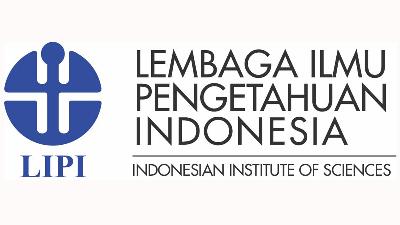Workload, Workplace Spirituality, Organizational Commitment and Turnover Intention in Nurses at M Hospital of Banten, Indonesia
Abstract
Keywords
Full Text:
PDFReferences
. Kemenkes RI. (2019). Profil Kesehatan Indonesia 2018 [Indonesia Health Profile 2018]. http://www.depkes.go.id
/resources/download/pusdatin /profil-kesehatan-indonesia/Data-dan-Informasi_Profil-Kesehatan-Indonesia-2018.pdf
. Lin, H. (2014). Revisiting the relationship between nurse staffing and quality of care in nursing homes: An instrumental variables approach. Journal of Health Economics, 37(1), 13–24.
. Roche, M. A., Duffield, C. M., Homer, C., Buchan, J., & Dimitrelis, S. (2015). The rate and cost of nurse turnover in Australia. Collegian, 22(4), 353–358. https://doi.org/10.1016/j.colegn.2014.05.002
. Mosadeghrad, A. M. (2013). Occupational stress and turnover intention: Implications for nursing management. International Journal of Health Policy and Management, 1(2), 169–176. https://doi.org/10.15171/ijh pm.2013.30
. Meyer, J. P., Stanley, D. J., Herscovitch, L., & Topolnytsky, L. (2002). Affective, continuance, and normative commitment to the organization: A meta-analysis of antecedents, correlates, and consequences. Journal of Vocational Behavior, 61(1), 20–52. https://doi.org/10.1006/jvbe. 2001.1842
. Hidayah, N. (2016). Hubungan beban kerja dengan turnover pada perawat di rumah sakit islam Faisal Makassar. Journal of Islamic Nursing, 1(1), 10.
. Robbins, S. (2015). Organizational behaviour. In Psychology and People: A Tutorial Text. https://doi.org/10.1007/978-1-349-16909-2_19
. Mobley, W. H. (2011) Pergantian Karyawan: Sebab Akibat dan Pengendaliannya. Jakarta: Pustaka Binaman Pressindo.
. Meyer, J. P., & Allen, N. J. (1991). Science 2008 Navarro. Human Resource Management Review, 1(1), 61–89. https://doi.org/10.1016/10 53-4822(91)90011-Z
. Reid, G. B., & Nygren, T. E. (1988). Human Mental Workload. Advances in Psychology, 52, 185–218. https://doi.org/10.1016/S0166-4115(08)62387-0
. Milliman, J., Czaplewski, A. J., & Ferguson, J. (2003). Workplace spirituality and employee work attitudes: An exploratory empirical assessment. Journal of Organizational Change Management, 16(4), 426–447. https://doi.org/10.1108/09534810310484172
. Rego, A., & Pina E Cunha, M. (2008). Workplace spirituality and organizational commitment: An empirical study. Journal of Organizational Change Management, 21(1), 53–75. https://doi.org/10.1108/0953481 0810847039
. Chen. (2010). Incorporating Workload and Performance Levels into Work Situation Analysis of Employees with Application to a Taiwanese Hotel Chain. American Journal of Applied Sciences, 7(5), 692–697.
. Arifin, M. Z., Alhabsji, T., & Utami, H. N. (2019). Pengaruh Beban Kerja Dan Kompensasi Terhadap Komitmen Organisasional Dalam Upaya Meningkatkan Kinerja Karyawan. Jurnal Bisnis Dan Manajemen, 5(2), 64–76. https://doi.org/10.26905/jbm.v5i2.2393
. Mehran, Z. (2017). The Effect of spirituality in the workplace on organizational commitment and organizational citizenship behavior. International Journal of Human. Capital Urban Management, 2(3), 219–228. https://doi.org/10.22034/ijhcum.2017.02.03.006
. Paat, G., Tewal, B., & Jan, A. B. H. (2017). Effect Of Organization Commitment, Work Satisfaction, Work Stress On TurnoverIntention Employee Offices Office Center PT. Bank Sulutgo Manado. Emba, 5(3), 3444–3454.
. Purwanto, E. (2019). Pengaruh Komitmen Organisasi dan Kepuasan Kerja terhadap Turnover Intention dengan Organization Citizenship Behavior sebagai Variabel Intervening (Studi. Journal of Chemical Information and Modeling, 53(9), 1689–1699. https://doi.org/10.1017/CBO9781107415324.004
. Hart, S., & Staveland, L. (1988). Development of NASA-TLX (Task Load Index): Results of Empirical and Theoretical Research. Elsevier Science Publishers B.V., 43(5), 139–145. https://doi.org/10.1007/s10749-010-0111-6
. Riani, N. L. T., & Made Surya Putra. (2017). Pengaruh Stres Kerja, Beban Kerja Dan Lingkungan Kerja Non Fisik Terhadap Turnover Intention Karyawan. Fakultas Ekonomi dan Bisnis Universitas Udayana , Bali , Indonesia. 6(11), 5970–5998.
. Budiono, S., Noermijati, & Alamsyah, A. (2014). Pengaruh Spiritualitas di Tempat Kerja terhadap Turnover Intention Perawat melalui Komitmen Organisasional di Rumah Sakit Islam Unisma Malang JAM. Jurnal Aplikasi Manajemen (JAM), 12(4), 1–11.
. Beehner, C. G., & Blackwell, M. J. (2016). The impact of workplace spirituality on food service worker turnover intention. Journal of Management, Spirituality and Religion, 13(4), 304–323. Retrieved from https://doi.org/ 10.1080/14766086.2016.1172251
Refbacks
- There are currently no refbacks.

This work is licensed under a Creative Commons Attribution 3.0 License.
Supported by :


 Indexed by :
Indexed by :




